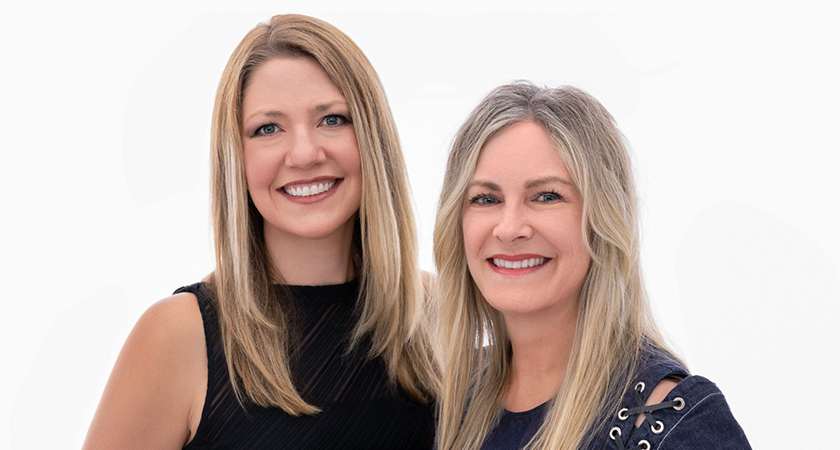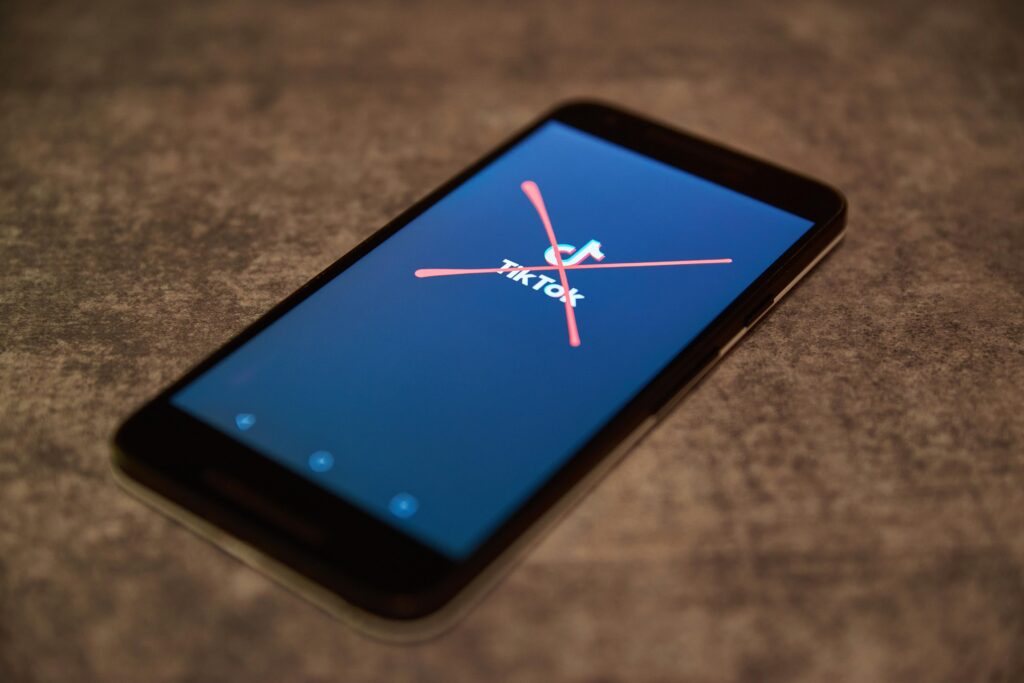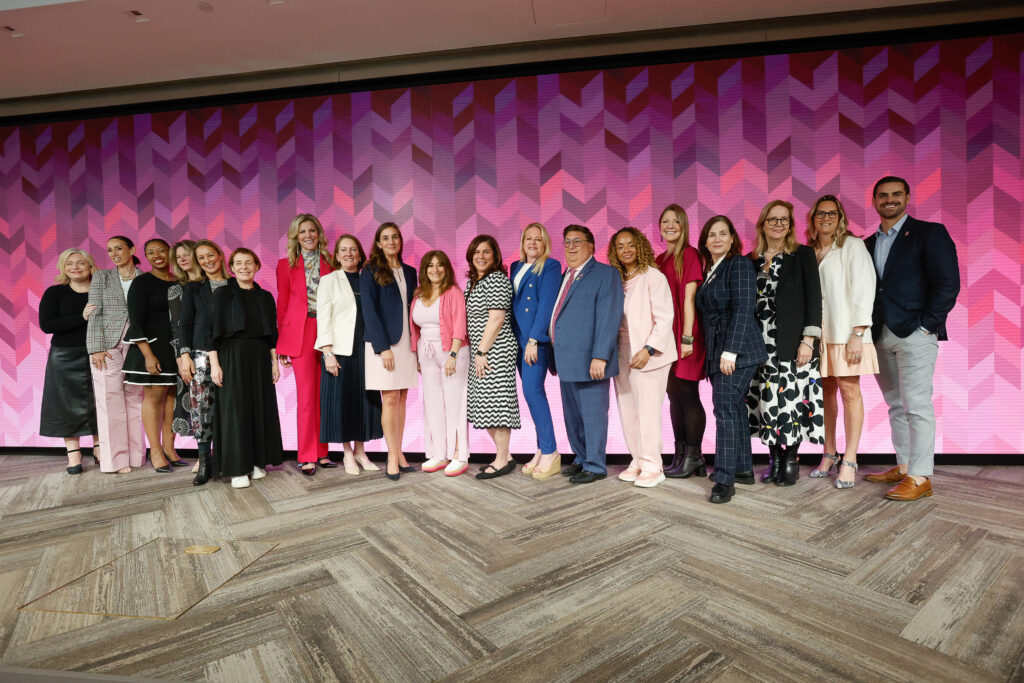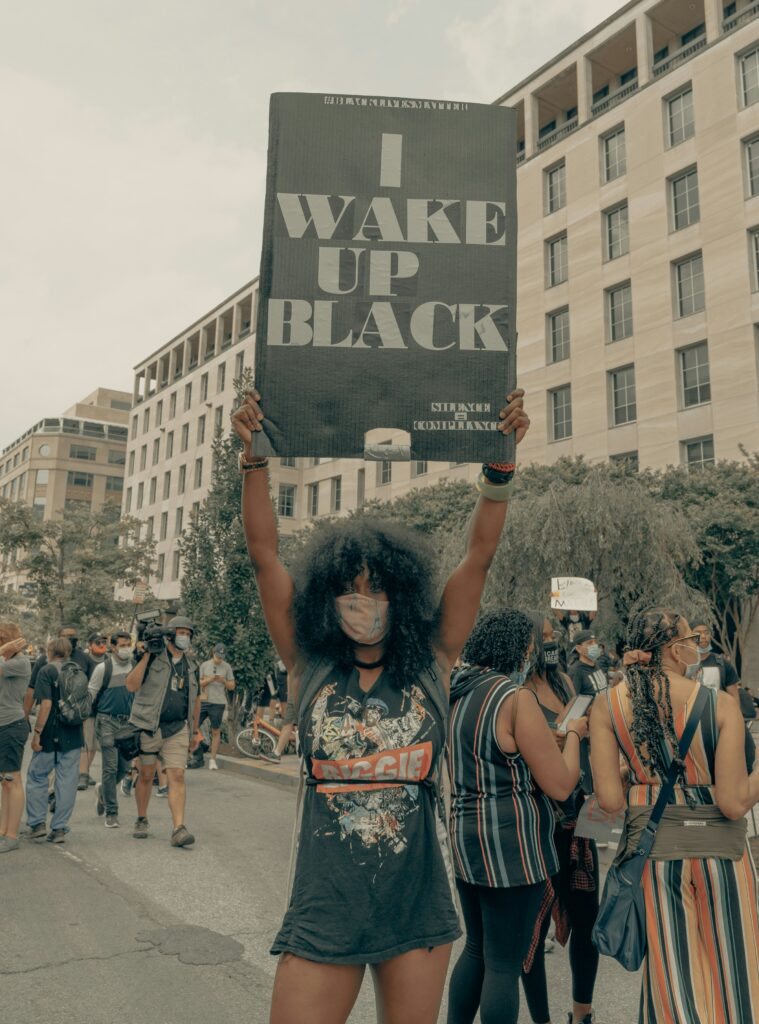At this year’s Advertising Week New York, Quigley CEO Carl Fremont sat down with Adam Ballard, VP of Marketing at Paycom, Steve Gross, University of Phoenix CMO, Jay Wolff, SVP Revenue & Partnerships at KERV Interactive, and moderator Katie Kempner of Kempner Communications for a panel discussion on driving authentic attention and commerce across screens. Their wide-ranging talk touched on shoppable TV, the impact of TikTok, and why one size does not fit all.
[This conversation has been edited for clarity.]
Carl: High-impact TV is much more than just the creative and the message. For impactful TV today, we need to think about how you’re capturing first-party data, when you’re driving people to the website, and CRM to build more of a lifetime value. You have to have a consistent experience across every touchpoint.
Steve: The worlds of brand and demand capture are coming together. I’m not up for just doing branded advertising—everything has to perform. Upper-funnel stuff needs to perform. We measure like crazy—about what kind of search response or upper-funnel media gets, about what kind of enrollment response it gets. And we’re able to link it to demand capture channels like search or on your website—I mean, websites are where it really happens. Some people require more time for research. Other people are ready to move now. And you got to be able to handle both.
Katie: As we talk about the holistic view of TV, there’s one component we need to make sure to think about, which is shoppable TV. We saw a little bit about that. Steve, can you explain what that means?
Steve: Who here has watched Friends before? Do you remember an episode where Rachel and Phoebe bought a couch from Pottery Barn? What do you guys think happened to Pottery Barn sales? We’ve come a really long way since then, but there’s nobody that has yet figured out how to do what’s called frictionless commerce on television. What I think is happening now is what we’re calling shoppable TV. There are ways to actually transact with television through interactivity and QR codes that never existed before. So, I think what everybody’s going to see are new enhancements to actually get consumers to buy goods and products off of live television. That’s going to be really exciting stuff.
Katie: Steve, how do you vary your creative across the upper funnel of media?
Steve: Today’s world requires a high degree of tailoring for the channel that you’re on, and the device that you’re using, as well as the usage occasion that you’re focused on. If you’re watching television, you’re in your living room, you’re leaning back, and if you’re actually seeing that commercial, you probably have a fair degree of tolerance to watch the whole thing. I do. So, you could see an example of a linear spot that performs really well. If you’re on your phone, you will have about maybe half a second of tolerance, honestly. That has profound implications for the creative process. You have to grab somebody and hold them—no wide-angle shots. You have to show someone’s face; show something intrusive, something provocative to hold on. Then if you’re successful in doing that, you might be able to hold on to them for a minute or two. YouTube folks call it, “be short or get chosen.” I kind of thought that was good. So, I’ve stolen it. Then, for things like TikTok, it’s like a totally different animal. No production value. Anti-production value, really. But you do lots and lots and lots, and test the heck out of it, then see what works and drop what doesn’t.
Katie: Adam, let’s talk about TikTok and using Corporate Natalie. Nobody was doing that in the B2B space. Then you decided to move her from TikTok to TV. Can you tell us a little bit about that transition?
Adam: We’re in the B2B space, but we have a really unique and maybe provocative problem to solve that I think everyone in this room can understand. And that is, we believe, controversially, that people should be paid correctly—that you deserve what you’re owed. And oddly enough, hundreds of millions of people in the last five years haven’t been. The people who experience payroll errors aren’t the end users for our product. So Natalie, for us, represented that employee who has had the frustration. We wanted her to embody that person—and be able to really bring to life the frustrations an employee might feel in the workplace in a satirical way that was authentic and natural to TikTok. We tested there initially; we tested how we could get that attention and then hold that attention to plant the seed. And then for us, the question just becomes about scale. How do we take the success of Natalie and our partnership together?
Katie: How did you take that energy that you knew you had with her from TikTok and move it over and keep it on TV?
Well, I think the important thing is that Natalie has developed her own persona and her own character, and she very much has cultivated that on her platforms. What we did not want to do was create a new character for Natalie. It was important to us that Natalie’s brand could live separate from the Paycom brand. It was also important to us that Natalie understood and could embody our brand value proposition, because we enlisted her all throughout the writing and creative process, to be able to bring her brand to life in the right way.
And then we gave ourselves a lot of room to try and to fail. You can’t recreate TikTok on TV, but you can make stylistic choices to try to execute in a way that feels authentic. And I think one of the most interesting things that’s happened with us, with her, which was not a KPI of ours in this campaign in any way, is we’ve had people apply for jobs at Paycom because they saw Natalie in a spot. Which, to me, is a great indication of the authenticity she brings forward. That really has made the difference for us
Katie: Steve, I see you nodding your head, and I know you’ve worked with content creators and influencers. Can you talk a little bit about what you’ve learned from that?
Steve: Yes. So, first of all, I’m really interested in hearing how that campaign translates to television. We haven’t taken that step yet, but the way you’re doing it seems to make a lot of sense to me. We’re pursuing something very similar. We’re engaging with creators, a lot of new creators every month, between 10 and 15, and that’s accelerating. Some of them are about the University of Phoenix, but more of them are sponsored by the University of Phoenix, but are not necessarily about us. They are about aspects of the decision-making process that people care about, that we’re facilitating. People like that because there’s a limited tolerance for paid media. There’s a certain degree of credibility, particularly within that TikTok environment for people who are credibly talking about things in a way that matches that environment. And we’re getting good traction; not from everybody, most don’t work, but the ones that do, we’re doubling down on. The other thing, though, is that the half-life is kind of short. We’ve come to realize that people get fatigued, so you’ve got to keep it coming. It’s low production value; high volume; test like crazy.
Katie: Jay, what are your thoughts on new or future measurement metrics for video?
Our POV is that current measurement for television is antiquated. That everything is kind of a proxy or a best-case scenario. There are a lot of companies that do great work that give marketers and agencies the ability to get closest to the pin, but I think we need to find a way to actually see what’s actually driving conversions off of television.
I know we spoke a little bit about this before, but I think that authentic attention and television interactivity through dynamic QR codes is key. Being able to personalize a QR to you and your area code for that product, service, or that education that you want, we think that’s the future. We think that even if you get 100 scans, that authentic action is the best proxy for an actual lead, or a conversion. And that’s nothing to take away from what’s been done the last 30 years, 40 years, on television. I really believe that everybody has to think about new metrics and TV. You can’t sit back and rest on a GRP
Katie: Are there other metrics that are going to tie TVs to other screens that we should be thinking about?
Jay: You know, the interesting thing about the QR code is you do it in your phone. 90% of people sit in front of their TV with their phone. So, what you’re doing, basically, is getting the device ID. In layman’s terms, the actual identifier of the device is scanning the television. So you start to collect datasets, and that data can then be used to foster different screens—and not just digital screens. You can tie that device to everything in the household. And I think that’s the important part. TV is no longer just the high-impact reach vehicle. It’s now a performance-based environment. I don’t think anybody’s looked at TV as performance-based, unless it was DRTV with 1-800 numbers, etc.
Katie: Carl loves Lightning Rounds, and I can’t leave him without one. Can you share a piece of parting advice, or what you’re most looking forward to in the future for TV that we should all be thinking about for 2023?
Jay: Frictionless commerce is the real deal. I think the broadcaster’s will get smarter and they’ll realize that you have a phone in front of you. That’s what our company does, is figure out a way with broadcasters to bring you immediate commerce on television through interaction—interacting with the TV like you’ve never done before. That’s going to happen; it’s going to be real. It’s not a pipe dream. It’s not going to happen in 10 years, it’s going to happen in 2023. I’m pretty certain about this, and I’m excited for everybody to see it and just remember this panel.
Adam: I completely agree with that statement. I think we are there. And I think what that will do to us in the industry creatively is it will allow us to focus on those activities and actions we’d want our audience to take. I think, too often, the struggle you have is trying to cram 25 messages into a single 30-second spot, which is impossible to do. So to the extent that we begin measuring and identifying the right forms of measurement, it will change how we think creatively. It will change how we message creatively. And I think that’s where we want to be testing into. We want to be leaning into that because that is the next evolution of TV, which will cross not just television, but every digital and social platform as well, as they all tie together.
Steve: I think 2023 will be the year that there’s going to be a step-function advance in the measurement of upper-funnel media and the impact that it has on the entire funnel. I think there’s been great progress, and I think we’re going to see a significant advance.
Carl: The future is about creating an end-to-end 360 ecosystem, which includes multiple channels, multiple KPIs, and measuring the interactivity of shoppable ads. I believe there’s tremendous opportunity still ahead to further drive impact of this medium.







